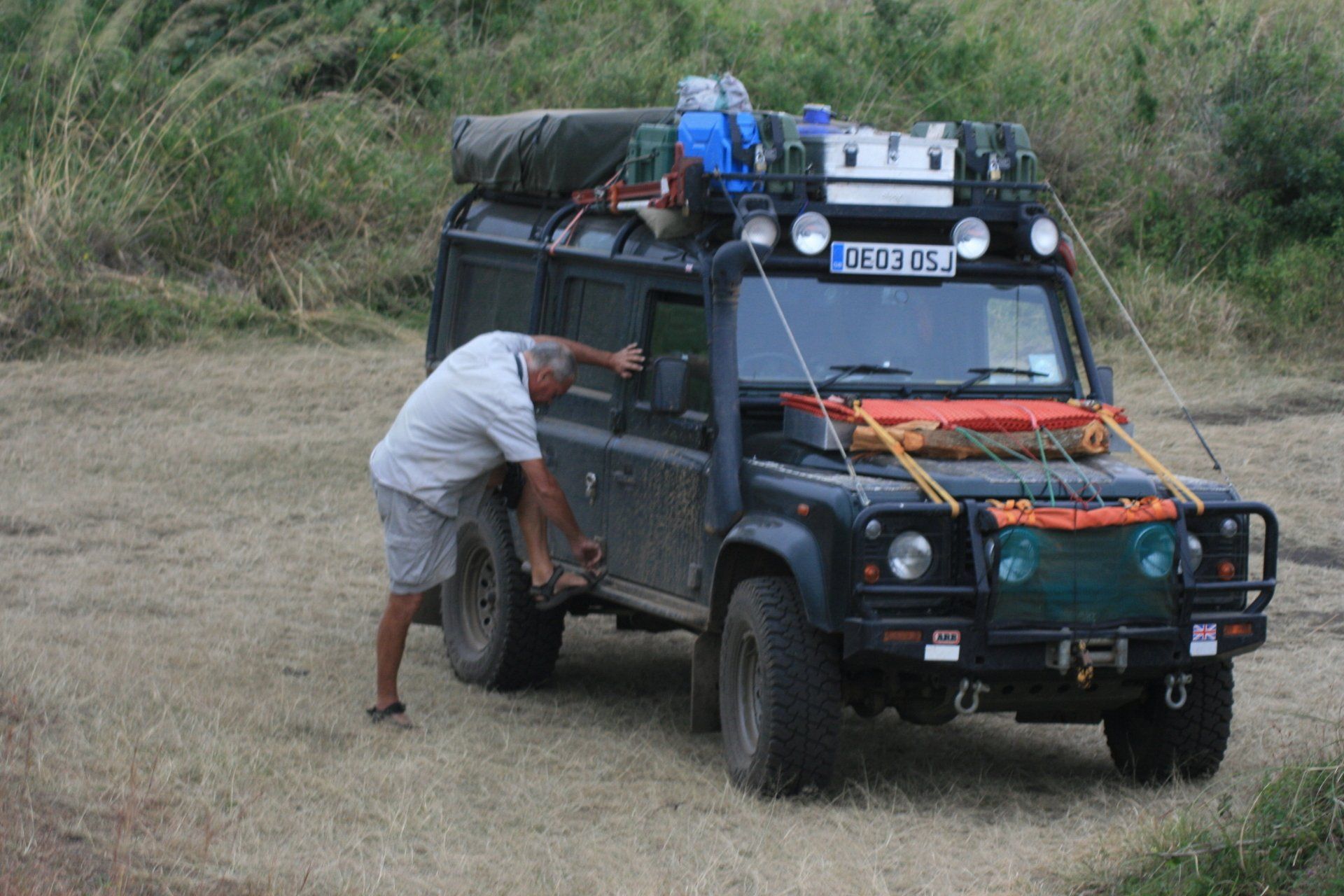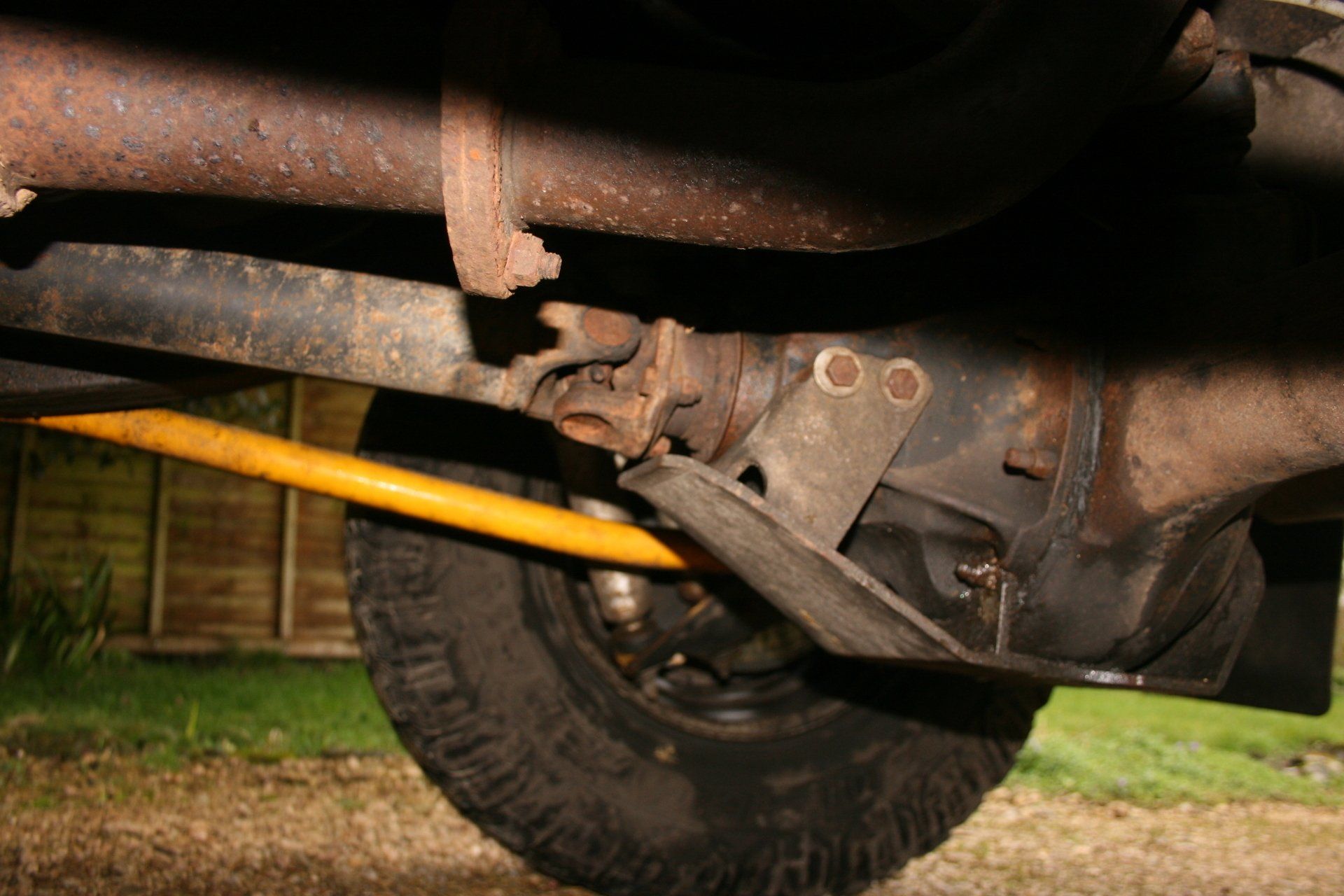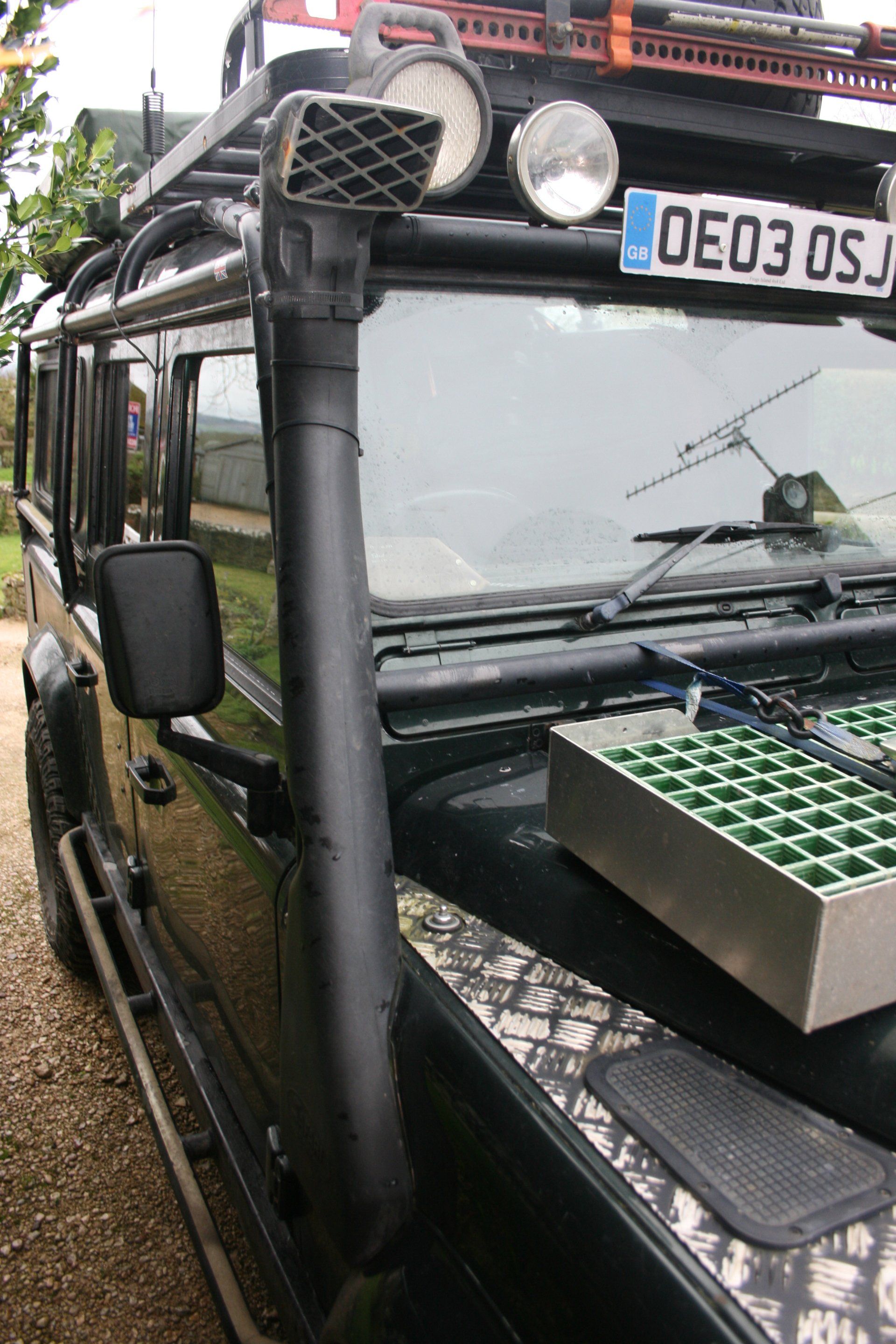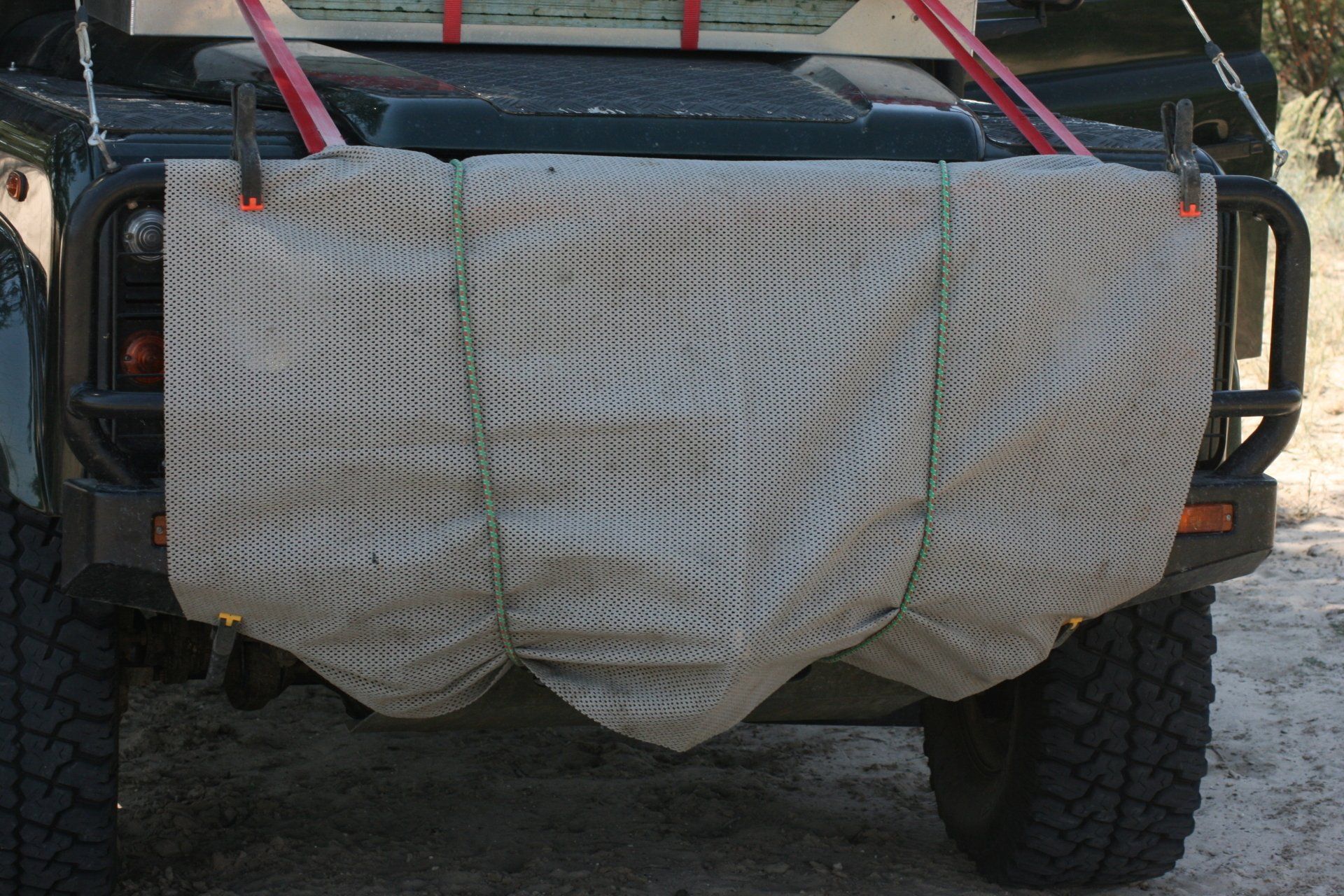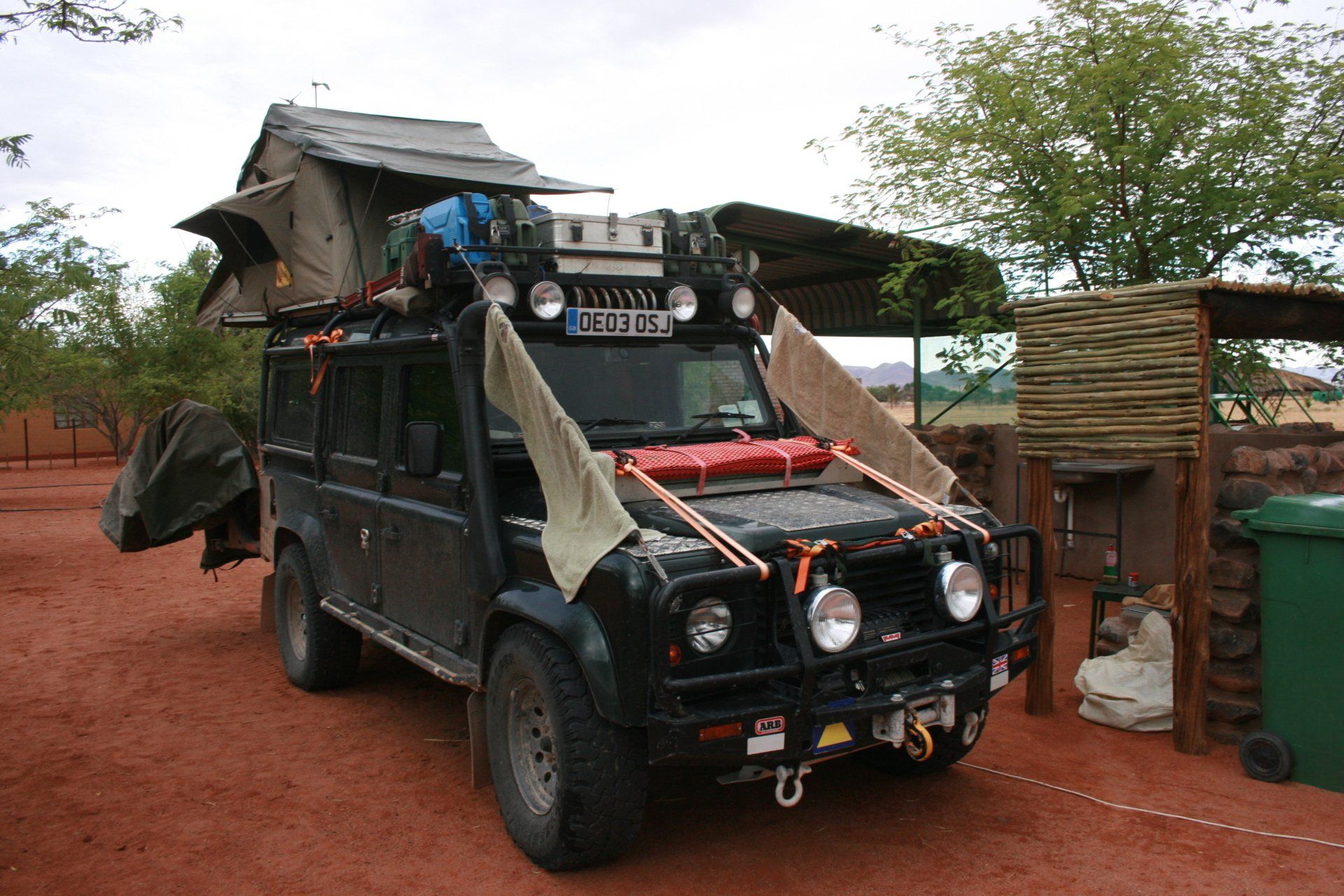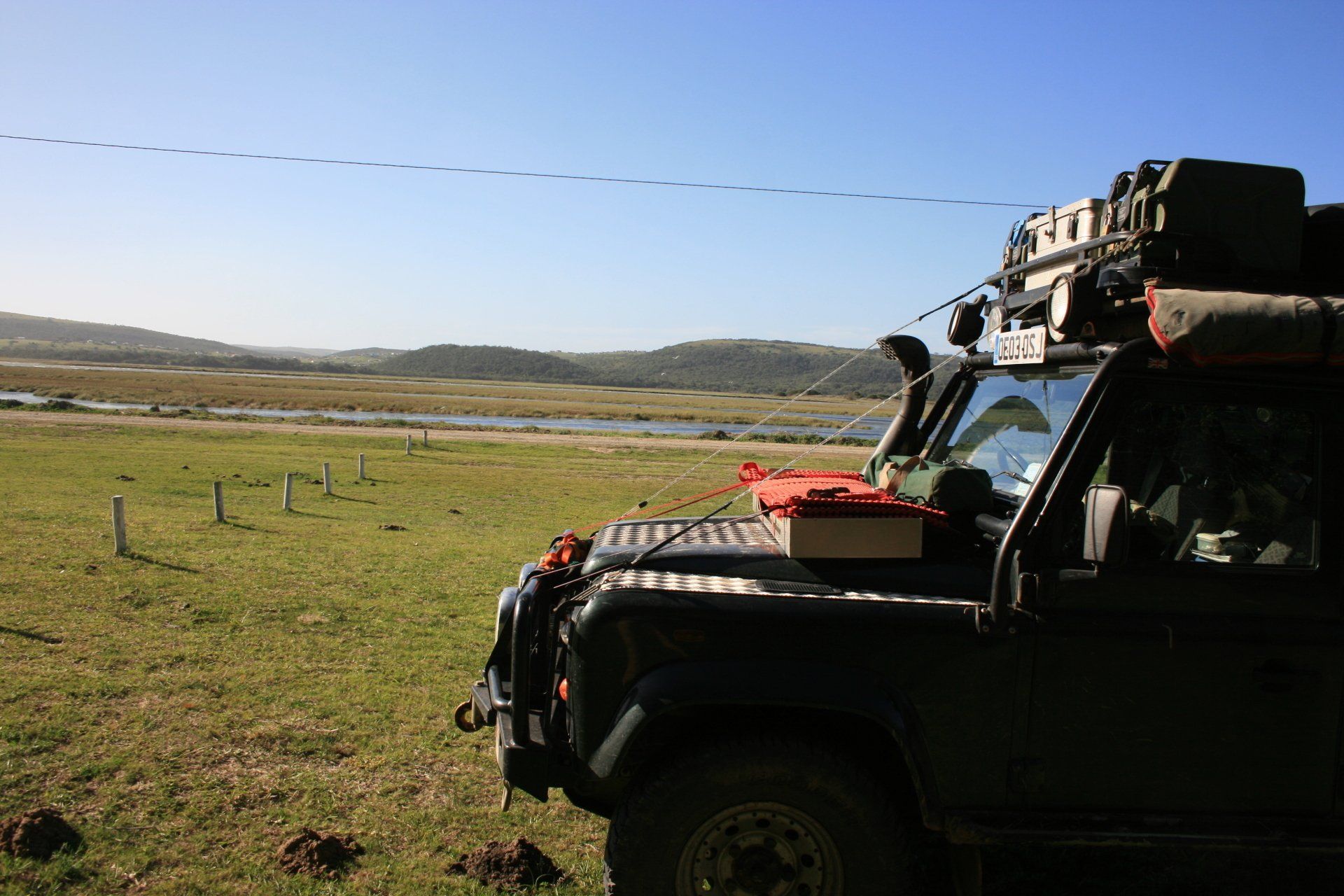Africa4x4
African Adventure - Our Trip
Vehicle Protection

Slide title
Write your caption hereButton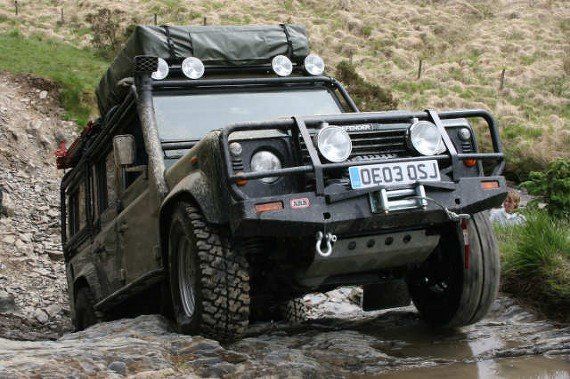
Slide title
Write your caption hereButtonSlide title
Write your caption hereButtonSlide title
Write your caption hereButtonSlide title
Write your caption hereButtonSlide title
Write your caption hereButtonSlide title
Write your caption hereButtonSlide title
Write your caption hereButtonSlide title
Write your caption hereButtonSlide title
Write your caption hereButtonSlide title
Write your caption hereButtonSlide title
Write your caption hereButtonSlide title
Write your caption hereButtonSlide title
Write your caption hereButton
VEHICLE PROTECTION
Safari Snorkel
Another de rigueur piece of equipment that serves two purposes.
Firstly; to allow deep water wading without drawing water into the engine thus avoiding the otherwise consequential dire outcomes. The maximum wading depth of a standard Defender is only 500 mm (top of the wheel rim roughly) as the standard air intake is set on the side of the wing. A snorkel will increase your wading depth to about 7 feet! Regularly check pipework to air filter box. Best also to extend the various axle, gearbox and engine breathers to prevent water ingress.
Good advice when confronted with a water crossing is to wade it first; this, however, does not take account of the various creatures that could be present in African waters and would wish you harm. I devised a depth finding system of a weight attached to a crab line with floats (corks) set at intervals to give an indication of depth.
Also bear in mind that the ECU is located in the driver's seat box making it susceptible to water should it be deeper than the box top - for serious deep water work best to extend ECU to higher position as we did.
Secondly; to allow clean air into the air intake. Many African roads are dirt tracks and other vehicles will kick up thick dust. Dust is densest low down and thins higher up. With a snorkel there is more chance of getting cleaner air into the engine without having to clean the air filter every day: mine never required cleaning as a matter of urgency. With the Safari snorkel, in particularly dusty conditions, the top intake scoop could be reversed so that little or no dust enters without any real effect on performance. For some time I ran mine at right angles to reduce the intake of butterflies that can quickly clog the air filter.
Body and underbody protection
An inevitable consequence of off-roading on challenging terrain is the potential to damage something. Dents and scratches have to be an accepted hazard in the African bush and if you don’t want your shiny vehicle scratched, don’t take it. Most importantly, steering, axles and fuel tank need some form of guarding, as a serious knock in the wrong place could disable the vehicle in the middle of nowhere or dump all the fuel. The following was fitted to our vehicle, most of which was necessary, some not.
Bush wires
Fitted from each front corner to each roof corner. Useful for pushing branches away from screen and preventing damage. I broke mine a couple of times. Also doubles up as washing lines! Legality in UK subject to debate.
Chequer plating
Another de rigueur item that no self-respecting off-roading Land Rover would be seen dead without. I plated the bonnet and wing tops but should have gone for full plating on the bonnet. The biggest advantage of the plating is the added strength allowing one to walk on the bonnet for easy access to the roof contents. The unplated sections of the bonnet were abused as I used it for carrying firewood and consequently became badly scratched; full plating would have protected this. I sprayed mine matt black to reduce glare.
Rock sliders
A substantial bar between the wheels to protect the body below the door that would be susceptible to damage when climbing over rocks or brushing through substantial trees. Ours also acted as a step and I placed luminous anti-slip tape along its length as it was slippery in the wet.
Light guards
Fitted to standard headlamps and rear lights but not driving lights. In my opinion, an unnecessary fitment as the ‘bull bars’ protected the front lights from trees etc. and the gaps in the guard are too big to prevent stone damage. The rear ones aren’t prone to damage in the first place unless one's reversing is suspect and even then you have a spare wheel to cushion the impact!
Steering guard; track rod protector; front differential and rear differential protection; fuel tank protector
These items protect the more vulnerable items underneath when traversing rough terrain, bearing in mind that the fuel tank is plastic on a TD5.
Seed & Wading screen
Seeds and butterflies are a reality and can easily clog the intercooler and radiator causing overheating issues. When driving through long grass or in the butterfly season it is best to cover the front grille with a fine mesh net. I fitted ours permanently to the bull bar that did the trick most of the time but seeds could still get behind the screen in thick fruiting grass. I supplemented this by covering the whole of the front with a meshed ground sheeting held in place with clips.
The fitted screen also had a solid section that could be rolled down to prevent water powering into the engine compartment – I never used it.
www.africa4x4.org

